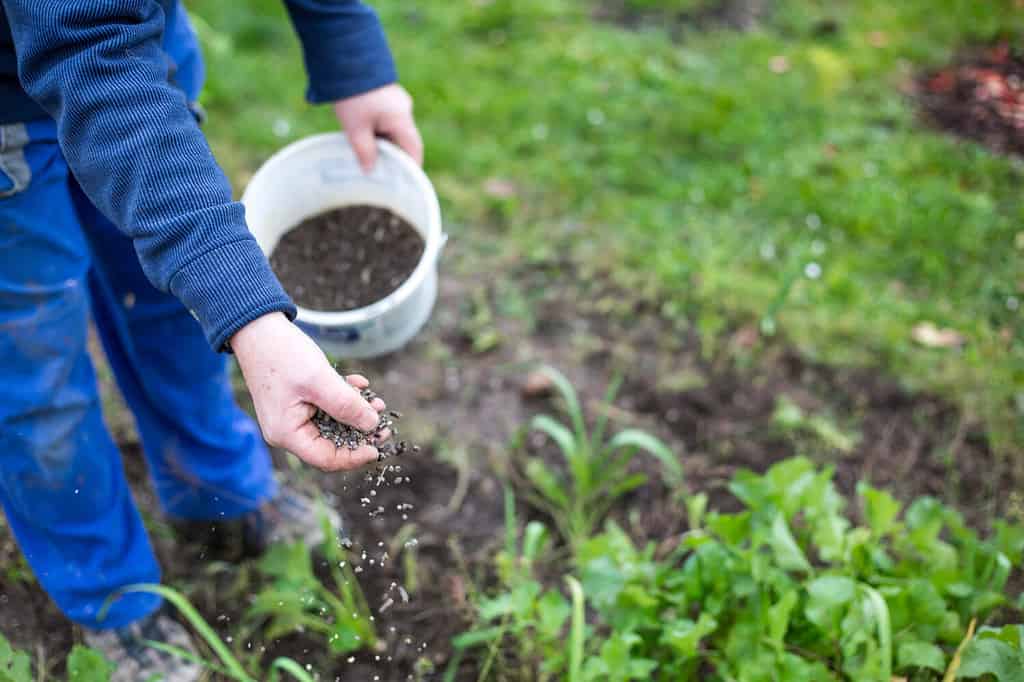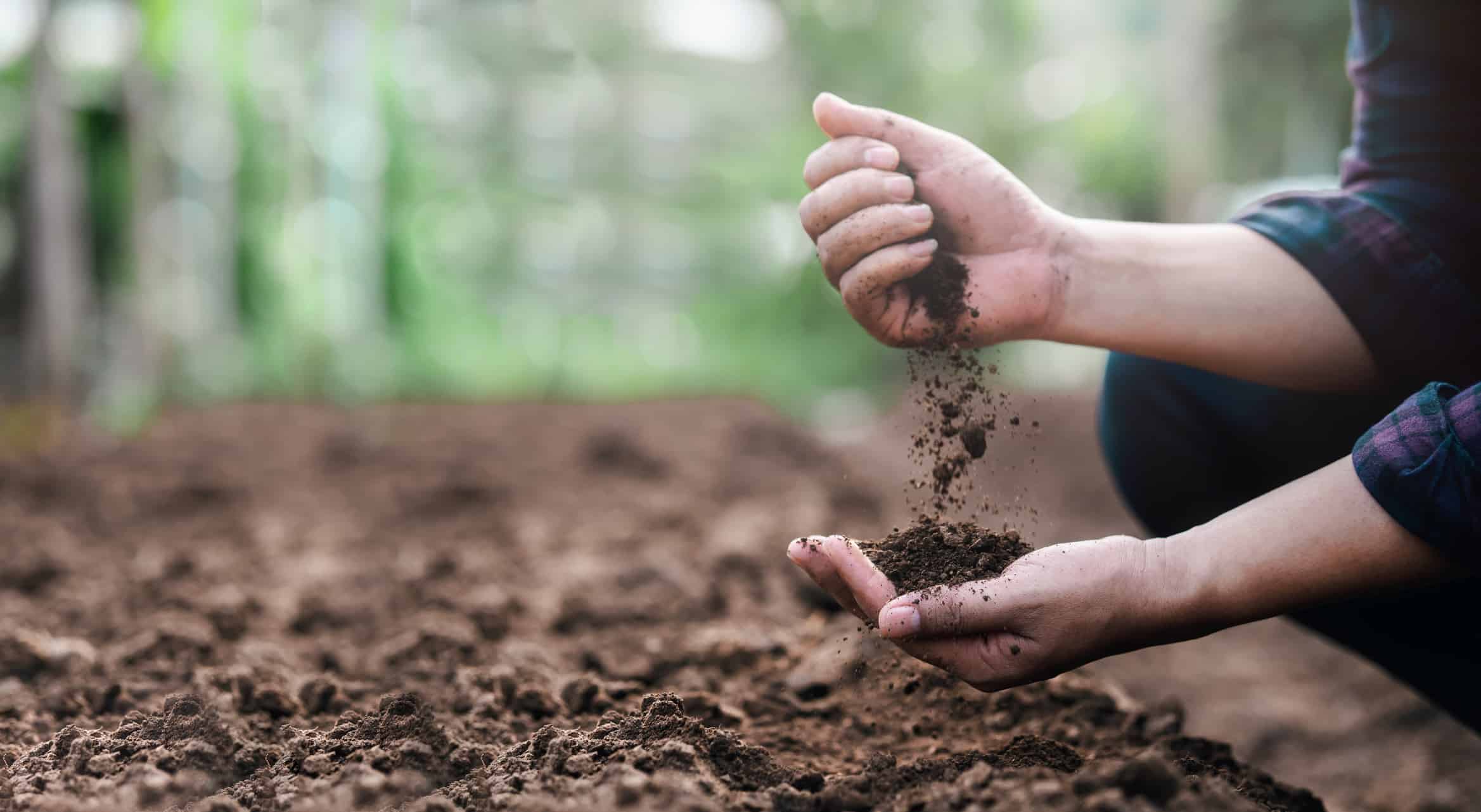In the world of gardening, Miracle-Gro soil has long been a go-to choice for many plant enthusiasts. However, before you reach for that familiar green-and-yellow bag, it’s important to consider some reasons why this seemingly magical soil might not be the best option for your garden. Let’s take a look at some reasons not to use Miracle-Gro, as well as some alternatives to consider.
1. Synthetic Fertilizers Aren’t So Great
Miracle-Gro soil shouldn’t be used by gardeners because synthetic fertilizers can have detrimental effects. Although it could seem like a practical choice, these fertilizers hurt the environment and the general health of plants over time.
Chemicals used in the production of synthetic fertilizers, such as those in Miracle-Gro, have the potential to upset the natural equilibrium of soil and water systems. These substances can pollute neighboring water bodies and groundwater as they seep into the soil, causing pollution and perhaps harming aquatic life.
A cycle of dependence on synthetic fertilizers can also develop in plants. Although they provide plants an immediate boost of nutrients, over time plants lose the ability to absorb nutrients from the soil. The plant’s resistance to pests, illnesses, and environmental challenges may be weakened as a result.
Just as well, overusing synthetic fertilizers can cause nutritional and pH imbalances in the soil. This may have unforeseen repercussions, such as nutrient runoff that worsens water contamination and influences soil fertility.
Gardeners can choose more environmentally friendly alternatives to Miracle-Gro and other synthetic fertilizers as a substitute. The soil may be enriched with nutrients in a way that promotes long-term plant health without endangering the environment by using organic fertilizers, compost, and natural soil amendments. These methods promote beneficial microbial activity in the soil, improving its structure and nutrient retention over time.
2. Some Products Have Chemical Additives
Gardeners should steer clear of Miracle-Gro soil due to the presence of chemical additives in many of their products. While Miracle-Gro promises quick growth and vibrant plants, these chemicals can have negative effects on both the environment and the overall well-being of your garden.
Miracle-Gro soils often contain synthetic fertilizers and chemical additives that provide a rapid but short-lived burst of nutrients to plants. These additives can include things like synthetic growth enhancers, pesticides, and other compounds. While they might lead to rapid growth initially, the long-term consequences can be detrimental.
The chemicals in Miracle-Gro soil can harm the natural balance of your garden’s ecosystem. They may not only affect the health of the plants you’re trying to nurture but also impact beneficial insects, soil microorganisms, and nearby wildlife. The runoff from these chemicals can find its way into water bodies, causing pollution and negatively affecting aquatic life.
Moreover, the continuous use of Miracle-Gro soil with chemical additives can lead to soil degradation. The soil becomes dependent on these quick-release nutrients, preventing plants from developing strong root systems and the ability to absorb nutrients naturally. Over time, this can result in weaker plants that are more susceptible to diseases and pests.
Gardeners seeking a healthier and more sustainable approach should consider using organic fertilizers and natural soil amendments. These alternatives enrich the soil gradually and promote a balanced ecosystem. Compost, mulch, and organic matter help maintain soil structure and improve water retention.

Chemical additives can negatively affect soil health over time.
©sasirin pamai/Shutterstock.com
3. It Doesn’t Contribute to Long-Term Soil Health and Sustainability
Gardeners should avoid using Miracle-Gro soil as it falls short of promoting long-term soil health. As we mentioned earlier, Miracle-Gro soil relies on synthetic fertilizers and additives that provide an immediate nutrient boost to plants. However, this rapid nutrient release doesn’t align with the natural processes that foster strong and resilient soil ecosystems. Instead of nurturing the soil, it creates a dependency cycle where plants become reliant on external inputs.
Sustainable gardening is rooted in maintaining the health of the soil. Healthy soil is alive with beneficial microorganisms, worms, and fungi that work together to break down organic matter and release nutrients gradually. In contrast, Miracle-Gro’s quick-release approach can disrupt this delicate balance, weakening the soil structure and microbial diversity.
Long-term soil health requires the gradual accumulation of organic matter, which enhances soil fertility, structure, and water-holding capacity. Miracle-Gro’s synthetic fertilizers fail to contribute to this process, leading to soil that becomes compacted, less able to retain water, and more susceptible to erosion.
A more sustainable approach involves nurturing the soil’s ecosystem and encouraging a self-sustaining nutrient cycle. Incorporating organic matter, compost, and natural soil amendments can enrich the soil with nutrients gradually, supporting the growth of beneficial microorganisms. This promotes a healthier root system and enhances the soil’s structure, water-holding capacity, and nutrient availability.

Dolomitic limestone powder is considered another excellent alternative to chemical fertilizers when it comes to raising soil pH.
©FotoHelin/Shutterstock.com
4. Your Garden Could Become Dependent on Constant Synthetic Fertilizer Treatments
Gardeners should be cautious about using Miracle-Gro soil, as it can lead to a concerning reliance on synthetic fertilizers. Again, Miracle-Gro soil contains synthetic fertilizers that provide an immediate burst of nutrients to plants. This initial boost can lead to rapid growth and vibrant foliage. However, over time, the constant use of these synthetic fertilizers can create a dependency cycle. Plants become accustomed to receiving nutrients in this easily accessible form, making them less capable of drawing nutrients naturally from the soil.
This dependency on synthetic fertilizers can have adverse effects on your garden’s resilience. Without the ability to source nutrients from the soil’s natural processes, plants become more susceptible to diseases, pests, and environmental stresses. Moreover, the continuous application of synthetic fertilizers can alter the soil’s pH balance and nutrient composition, further complicating the garden’s overall health.
By avoiding the constant use of Miracle-Gro soil and synthetic fertilizers, gardeners can cultivate a garden that thrives independently. While quick fixes may seem appealing, the long-term benefits of fostering a balanced ecosystem are more valuable. By focusing on soil health and natural nutrient cycles, gardeners can ensure the longevity and vitality of their gardens without becoming reliant on synthetic treatments.
5. It’s Expensive
Gardeners should think twice before opting for Miracle-Gro soil due to its higher cost compared to alternative options. Miracle-Gro soil is often priced at a premium compared to other soil products on the market. The brand’s reputation and widespread availability contribute to its higher cost. However, for gardeners working within a budget, the expense of using Miracle-Gro soil can quickly add up, especially for larger gardening projects.
There are more affordable alternatives available that can provide similar, if not better, results for your garden. Many garden centers offer a variety of compost and organic soil mixes at lower prices. These options can be just as effective in promoting plant growth and overall garden health without the added expense.
Moreover, investing in soil improvement practices can offer significant long-term savings. Building and enriching your soil with compost, organic matter, and natural amendments can lead to better soil structure, nutrient retention, and water-holding capacity. These improvements reduce the need for frequent soil replacements and costly fertilizers, ultimately saving gardeners money over time.
Before committing to Miracle-Gro soil, gardeners should weigh the potential benefits against the financial impact. Exploring more budget-friendly alternatives and focusing on improving soil health can lead to better results without breaking the bank. By prioritizing cost-effective gardening practices, gardeners can create thriving gardens that don’t compromise their wallets.
6. The Packaging Isn’t Very Sustainable
Gardeners should also exercise caution when considering Miracle-Gro soil due to concerns about its unsustainable packaging. While it might not be the biggest deal, the environmental impact of its packaging should not be overlooked.
Miracle-Gro soil often comes in plastic bags or containers that contribute to plastic waste. These single-use packaging materials can end up in landfills, contributing to pollution and harming ecosystems. Plastic takes a long time to break down, and its production also has negative implications for natural resources and energy consumption.
For environmentally-conscious gardeners, the non-sustainable packaging of Miracle-Gro soil can be a significant drawback. Choosing products with more eco-friendly packaging, such as biodegradable bags or containers made from recycled materials, can align better with efforts to reduce plastic waste and minimize the carbon footprint associated with gardening practices.
Just as well, gardeners can explore alternatives to Miracle-Gro that prioritize both plant health and environmental responsibility. Organic compost, natural soil amendments, and homemade fertilizers are options that can be packaged and used in more sustainable ways. These alternatives not only support plant growth but also contribute positively to soil health and overall environmental well-being.
By making informed choices about the products they use, gardeners can help drive demand for more sustainable packaging practices within the gardening industry. While Miracle-Gro may offer convenience, the impact of its packaging on the environment warrants consideration when seeking a holistic approach to gardening.
7. You’ll Risk Overfertilization
Miracle-Gro soil contains synthetic fertilizers that provide an immediate surge of nutrients to plants. However, the concentration of these nutrients can be too high for the plants to absorb effectively. This can lead to overfertilization, where plants receive more nutrients than they can utilize. As a result, the excess nutrients can accumulate in the soil and water, leading to imbalances and potential harm to the environment.
Overfertilization can have adverse effects on plant health. Instead of promoting vigorous growth, excessive nutrients can disrupt the plants’ natural growth processes. This can lead to issues like stunted growth, yellowing leaves, and increased vulnerability to diseases and pests. In severe cases, overfertilization can even lead to plant toxicity and death.
Also, the excess nutrients from overfertilization can leach into surrounding soil and water bodies, causing pollution and negatively impacting aquatic life. This highlights the importance of using fertilizers responsibly to avoid harming the broader ecosystem.
Gardeners concerned about overfertilization should consider more balanced and controlled methods of providing nutrients to their plants. Slow-release organic fertilizers and natural soil amendments release nutrients gradually, reducing the risk of overwhelming the plants. Also, regular soil testing can help determine nutrient levels and guide fertilizer application, preventing the unnecessary addition of excess nutrients.
8. It Lacks the Necessary Organic Matter
Organic matter, such as decomposed plant material and nutrients from natural sources, is a crucial component of healthy soil. It contributes to soil structure, water retention, and nutrient availability. However, Miracle-Gro soil often relies heavily on synthetic fertilizers, neglecting the incorporation of organic matter that supports a balanced soil ecosystem.
Without adequate organic matter, the soil can become compacted and less capable of holding onto water. This can lead to poor drainage and an increased risk of water runoff, potentially depriving plants of the moisture they need. Additionally, the lack of organic matter affects the soil’s ability to retain nutrients, which can result in plants receiving an insufficient nutrient supply over time.
Healthy soil requires a diverse community of microorganisms and beneficial bacteria that break down organic matter, enriching the soil with nutrients and supporting plant growth. The absence of organic matter in Miracle-Gro soil can disrupt this ecosystem, negatively impacting the plants’ ability to thrive and leaving them more susceptible to diseases and pests.

Organic matter is a vital component of effective fertilizer. Synthetic fertilizers like Miracle-Gro usually lack the necessary organic ingredients to benefit plants in the long term.
©Simon Kadula/Shutterstock.com
9. It Has a Very Negative Environmental Impact
Gardeners should avoid using Miracle-Gro soil due to its significant negative environmental impact. While Miracle-Gro may offer quick growth and vibrant plants, the consequences it has on the environment cannot be overlooked.
Miracle-Gro soil often contains synthetic fertilizers and chemical additives that can leach into the soil and water systems. When these chemicals enter the environment, they can contaminate groundwater and nearby water bodies, leading to pollution and harming aquatic ecosystems. This pollution disrupts the balance of natural habitats and poses risks to the health of aquatic life.
Furthermore, the production and transportation of Miracle-Gro soil contribute to carbon emissions and energy consumption. The resources required to manufacture the synthetic fertilizers, package the product, and transport it to retailers can contribute to air pollution and contribute to the overall carbon footprint of gardening practices.
The long-term impact of using Miracle-Gro soil can also lead to soil degradation. The dependency on synthetic fertilizers can disrupt the natural nutrient cycles and microbial communities in the soil, affecting its overall health and fertility. As a result, the soil becomes less able to support plant growth without continuous reliance on external inputs.
To mitigate these environmental concerns, gardeners can choose more eco-friendly alternatives. As we’ve mentioned a few times in this guide, using organic compost, natural soil amendments, and sustainable gardening practices can support plant growth while minimizing harm to the environment. These methods promote healthier soil ecosystems, reduce pollution, and contribute to overall environmental well-being.
Conclusion
In conclusion, the use of Miracle-Gro soil has a significant negative environmental impact due to its reliance on synthetic fertilizers, chemical additives, and unsustainable production practices. Gardeners who are mindful of the environment should seek out alternatives that prioritize the health of both their gardens and the planet. By choosing more eco-friendly gardening practices, we can help create a more sustainable and harmonious ecosystem right at home in our gardens!
Alternatives to Miracle-Gro Soil
| # | Better Alternatives | Ingredients | General Cost |
|---|---|---|---|
| 1 | Homemade Miracle Grow | Grass clippings, crushed eggshells, coffee grounds, bone meal, organic matter | $$ |
| 2 | Coffee Grounds | Ground coffee, water | $$ |
| 3 | Animal Manure | Animal manure | $ |
| 4 | Organic Plant Food | Rock minerals, bone meal, crushed shells, wood, seaweed, etc. | $$$ |
| 5 | Eggshells | Eggs | $ |
| 6 | Organic Granular Fertilizer | Bone meal, fungi, bacteria, etc. | $$ |
| 7 | Compost | Carbon matter, nitrogen matter, water | $ |
Summary of 9 Reasons to Avoid Putting Miracle-Gro Soil In Your Garden
| Reasons Not to Use Miracle-Gro Soil | |
|---|---|
| 1 | Synthetic Fertilizers aren’t great for soil |
| 2 | It may have chemical additives |
| 3 | It doesn’t contribute to long-term soil health and sustainability |
| 4 | Your garden could become dependent on constant synthetic fertilizer treatments |
| 5 | It’s expensive |
| 6 | The packaging isn’t very sustainable |
| 7 | You’ll risk overfertilization |
| 8 | It lacks the necessary organic matter |
| 9 | It has a very negative environmental impact |
Thank you for reading! Have some feedback for us? Contact the AZ Animals editorial team.








